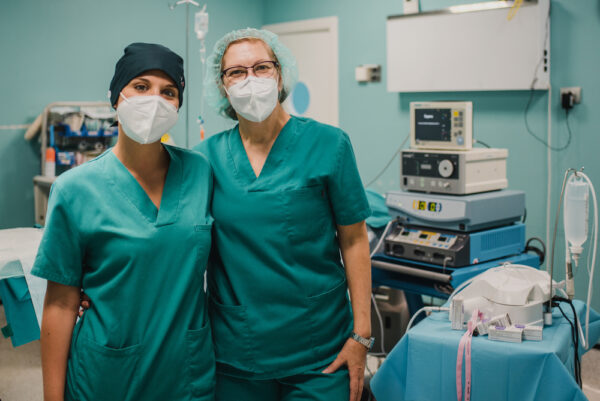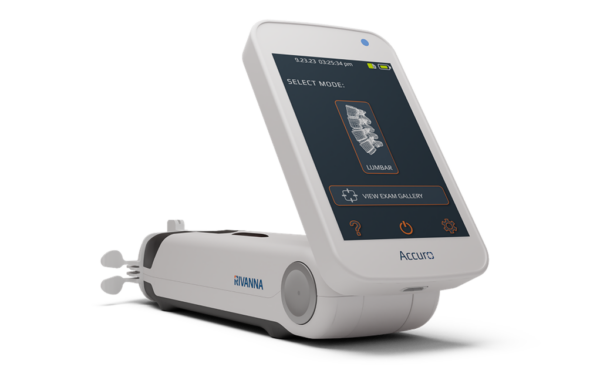A change is coming to acute pain management, and anesthesiologists are at the forefront. Ultrasound guidance has expanded the role of anesthesia providers by enhancing precision, safety, and efficiency in anesthesia administration. It enables more accurate needle placement, reducing complications such as nerve damage and vascular punctures. Anesthesia providers may perform procedures faster and with higher success rates, leading to improved patient outcomes and satisfaction.
As we celebrate the expanded roles of anesthesiologists and CRNAs, we can’t lose momentum in our pursuit of better solutions and elevated patient care. Now is the time to reflect carefully on how ultrasound guidance is supporting our critical anesthesiologist frontlines, and where clinicians report gaps in that support. Here’s what we’ve found so far.
Ultrasound guidance in anesthesiology
Ultrasound-guided regional anesthesia (UGRA) has been used since the early 2000s. In the past 15 years, it has played a key role in advancing visualization and accuracy in regional anesthesia procedures, improving standards of care overall. The limited accuracy of traditional techniques, with their reliance on tactile feedback and practitioner experience (or intuition in complex cases), presented a gap that UGRA has helped bridge. In fact, clinical studies have consistently shown that ultrasound guidance reduces complications and improves patient outcomes for regional blocks.
Today, UGRA is recognized as superior to blind techniques due to its proven safety and efficacy. By providing a real-time view of the anatomy, it allows for precise needle placement and drug administration, significantly reducing the risk of vascular punctures, nerve injuries, and failed blocks.
For neuraxial anesthesia, the utility of ultrasound guidance is more complex. Much like in regional anesthesia, traditional palpation methods for neuraxial-block placements often fall short in patients with challenging anatomies, such as patients with high BMI or scoliosis. Ultrasound-guided neuraxial anesthesia has shown tremendous promise in such specific cases, as it allows anesthesia providers to navigate anatomical complexities with confidence and enhanced precision. This technology not only aids in identifying the optimal insertion point but also ensures the correct depth and angle, minimizing the risks associated with misplacement and enhancing overall patient safety.

Ultrasound guidance has empowered anesthesiologists
Real-time imaging is a progressive tool for anesthesiologists. It reduces guesswork, allowing them to perform procedures with the confidence and ease that once required years of training and intensivist specialization.
- Accurate needle placement reduces the risk of complications, like dural punctures and nerve damage.
- Immediate feedback allows anesthesia providers to adjust techniques during procedures, leading to better outcomes.
- Fewer needle insertions mean less discomfort and higher patient satisfaction.
- Enriched anesthesiology education — through ultrasound guidance and the real-time feedback it provides — helps foster the next generation of anesthesia providers.
- Empowered anesthesiologists have more tools and options for improving patient care through advanced ultrasound training.
The result? A more confident workforce, ready to meet the challenges of modern anesthesia care. The adoption of ultrasound guidance is changing the anesthesiologist and CRNA roles, potentially enabling them to provide better patient care with fewer complications and higher success rates.

Advancements and future challenges in neuraxial anesthesia
Historically, ultrasound-guided neuraxial anesthesia has opened new doors, but not without presenting new challenges. The time required for ultrasonography scanning can be a limiting factor in simpler procedures, particularly in high-pressure environments where every second counts. While the scanning process typically takes 2-5 minutes, this time investment can be perceived as a hindrance when immediate action is required.
Training and proficiency have also been barriers to ultrasound-guided neuraxial anesthesia when traditional ultrasound devices are the only options for imaging. The steep learning curve associated with mastering traditional ultrasound equipment and techniques can dissuade practitioners from adopting this technology. Plus, the visualization and interpretability of spinal structures present technical difficulties, particularly in visualizing the needle and accounting for bone attenuation.
Accuro Neuraxial Guidance addresses many of these challenges with its portable, user-friendly design tailored specifically for neuraxial anesthesia. Accuro AI-enabled SpineNav3D™ technology automatically identifies key anatomical structures, which can provide anesthesiologists and CRNAs with immediate and reliable visual guides. And Accuro’s Multi-Frequency BoneEnhance® Image Reconstruction enhances bone-to-tissue contrast, making it easier to distinguish critical structures and optimize needle placement. These features significantly reduce the learning curve, enabling clinicians to adopt and use Accuro effectively with minimal training.
Looking to the future, real-time needle visualization remains a critical area for development. Enhancing this capability will further reduce complications and improve outcomes; engaging with anesthesia providers to identify key blockers and gather feedback is essential for continuous improvement. RIVANNA is committed to addressing these needs to provide anesthesiologists with the best tools available as their roles and impacts evolve.

What’s next for ultrasound guidance?
Ultrasound guidance for anesthesia is a boon for healthcare, and we here at RIVANNA are proud to play our part in harnessing and refining this technology in the service of both clinicians and patients. If we can enable more accurate needle placement — and we believe we can — we’ll help anesthesiologists reduce the risk of complications, streamline clinical workflows, and expand access to better care.
As we celebrate the progress we’ve made, our eyes are fixed on the horizon — on opportunities to evolve and on more clinical gaps our technology can help bridge. To that end, we’re listening carefully to our anesthesiology community. Your feedback will ensure sustained improvements in patient care, and it will enable us to make even greater strides in the future.
